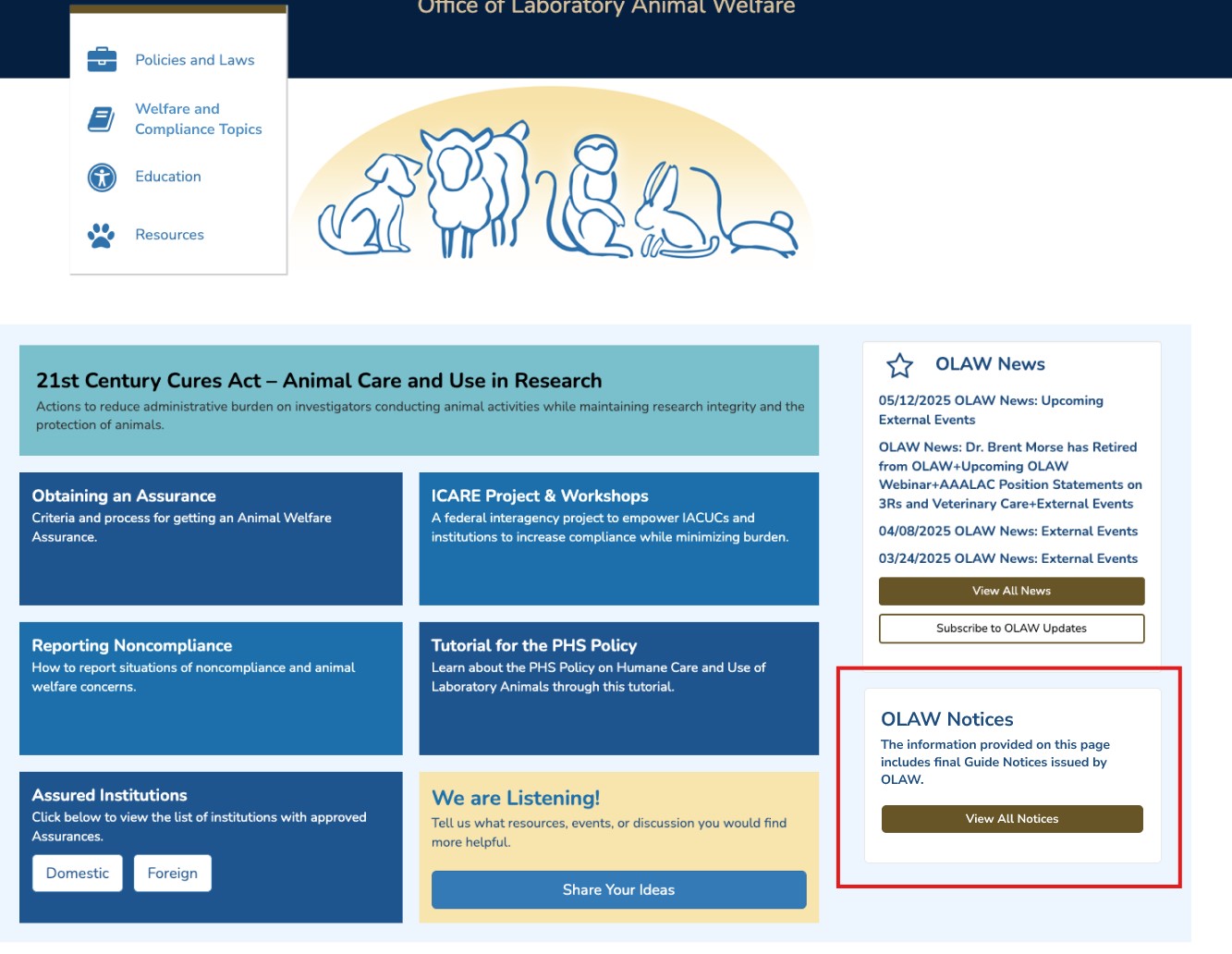In this issue:
- NAMs-related Resources for Investigators and IACUCs
- New Edition of the IACUC Handbook Released
- 2026 Animal Research Compliance (ARC) Seminar Series [External Event]
________________________________________
NAMs-related Resources for Investigators and IACUCs
A new topics page is available on the OLAW website called “Alternatives and NAMs” (https://olaw.nih.gov/AlternativesandNAMs) featuring resources, announcements, and tips for investigators and IACUCs when working with NAMs and the 3Rs, as well as explaining OLAW’s role in alternatives to animal use. Some helpful items you can find on the webpage include:
- A list of important recent NIH NAMs-related announcements
- Links to educational resources
- Related policies, Guide Notices, and FAQs
Webinars and articles, ...and more!
________________________________________
New Edition of the IACUC Handbook Released
The fourth edition of the IACUC Handbook has been released. Edited by Mark A. Suckow, Sreekant Murthy, Julie M. Sharp and Troy Hallman, the new edition covers a wide range of topics relating to animal care and use programs. The book is a publication of CRC Press.
As the book is an external publication, the content, opinions, findings, conclusions, or recommendations expressed in this publication are those of the authors and do not necessarily reflect the views of the U.S. Government, the National Institutes of Health (NIH), nor the Office of Laboratory Animal Welfare (OLAW). Neither the U.S. Government, the NIH, nor OLAW assumes any legal liability for the accuracy, completeness, or usefulness of any information, products, or processes disclosed in this publication.
For questions pertaining to the Public Health Service Policy on Humane Care and Use of Laboratory Animals (PHS Policy), particularly those regarding compliance and specific circumstances, please contact OLAW directly.
________________________________________
2026 Animal Research Compliance (ARC) Seminar Series [External Event]
The schedule for initial 2026 ARC Seminar offerings is now available! Check out these exciting topics:
- 2-20-26 | Dr. Stacy Pritt - PI Onboarding
- 2-26-26 | Eugene Matullo - Understanding the Micromanager - Exploring the Behavior and the Impact to ARC Teams.
- 3-20-26 | Dr. William Singleton - Intentionally Crafting the Culture You Want
- 4-17-26 | Dr. Madeline Budda - Fostering Collaborative Environments
- 4-30-26 - Dr. Nick Van De Velde - Influencing Successful Change
- 5-15-25 | Dr. Craig Koeller - Keeping old Facilities Current / Cross Training Programs
- 5-28-26 | Jennifer Morgan - Industry IACUC Integration: Effective Oversight Strategies When Research Is Business
- 8-26-26 | TBD - Dr. Azadeh Hatef - Animal Welfare Assessments under the CCAC Framework.
- 9-24-26 | Steph Mar - How IACUC and QA Overlap - Considering AAALAC|USDA|FDA
To see the 2026 schedule handout, click here: 2026 Schedule Handout. Please reach out to Eugene Matullo at [email protected] if you have any questions regarding the series or events.
About the ARC Seminar Series: The Animal Research Compliance (ARC) Seminar Series by EM3 is a nationally recognized virtual education and community engagement platform created to elevate the field of Animal Research Administration. Founded by Eugene Matullo, the series brings together professionals from across the research compliance community to share insights, best practices, and innovative approaches through specialized presentations and discussions. Serving over 300 institutions and more than 650 annual participants—including international attendees—the ARC Seminar Series fosters collaboration, professional growth, and community connection. Information regarding this external event is being provided as a courtesy. Please direct all questions to the host organization.










 ________________________________________
________________________________________